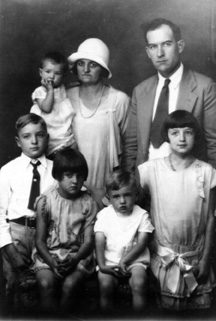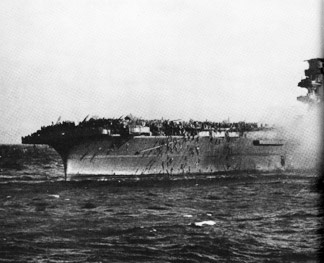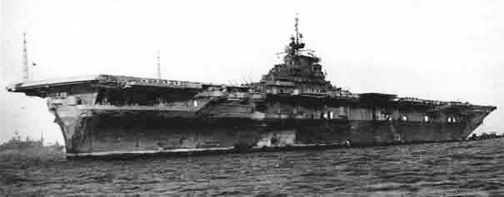|
U.S. Naval Aviation In the South Pacific during WW II Featuring the Lexington Aircraft Carrier The Battle of the Marianas — June 1944 Chapter 2 Page 1 of 5 Pages |
||||||||||||
|
presentation that Warren McLellan made to a school group in Fort Smith, Arkansas, November 11, 2002. |
||||||||||||
| From August 1921, when I was born, until September, 1941, I was fighting the battles of growing up — School, parents, 3 sisters and 1 brother, right here in Fort Smith, Arkansas. From September, 1941 to May, 1950, I was helping to fight some battles for our United States. From 1944 until today, I have been fighting the battles of marriage! I received a good upbringing in a Christian home during the early years. I received a Purple Heart and an Air Medal and some other ribbons to show for the military war. And, I have a wife, 3 sons, and 3 daughters-in-law, 6 grandchildren, and 2 great-grandchildren to show for the longer war. I am happy that my wife, Wanda, is here with us today. We moved back to Fort Smith in 1975. I commuted to Denver the last 6 years on Frontier Airlines for my flights. We were away from this area for some 30 years, but this is home and we always intended to come back to retire. This is a great place to live. |
||||||||||||
 |
||||||||||||
|
Children L to R: Warren, Eva in arms, Mildred, Bryan and Paula |
||||||||||||
| I want to mention right up front the names of my air crew members. Selbie Greenhalgh (now deceased) was my radioman. I talked with his wife, Helen, this past week. John Hutchinson was my gunner and he is now living in California. These 2 men helped save our lives with their quick thinking and cool heads while under enemy fire. |
||||||||||||
| There have been five United States ships named USS Lexington. The 4th Lexington, an aircraft carrier, was sunk early in WWII. In 1942, in the Coral Sea during the Guadalcanal, Bougainville, Solomon Islands and Rabaul battles.
When the USS Lexington was sunk in the Coral Sea, the shipyard in Boston was building another Essex type carrier. It had another name but the shipyard workers wanted another USS Lexington in the Pacific Fleet to confuse "Tokyo Rose," the propagandist for Japan during World War II. |
||||||||||||
 |
||||||||||||
|
Photo ctsy of LPHOWWII |
||||||||||||
 |
||||||||||||
|
Photo ctsy Pat Cannon Vido Coll.
|
||||||||||||
| She reported the Lexington sunk several times. So, the nickname of the Lexington was the "The Blue Ghost.’’ They got the new carrier out one year earlier than planned and the 5th USS Lexington was ready for battle. The ship’s number was 16 and the first air group aboard was Carrier Air Group 16. I was assigned orders to Torpedo Squadron 16. There was also a fighter squadron and a dive bomber squadron aboard the Lexington. CAG 16 - meaning Carrier Air Group 16 - was composed of about 90 aircraft and approximately 500 pilots, crew members and maintenance personnel. We were well trained and ready to go. Chapter 2— End of Page 1 of 5 Pages — Go to Page 2 Or This Story’s Cover Page — Editor’s Introduction — Table of Contents Fred Gwynn’s “Torpedo 16” — Chapter — 1 — 2 — 3 — 4 Or Home - Contact Us - Cold War Hist. - 91st SRS Hist. - Stardust 40 Mission Story |
||||||||||||